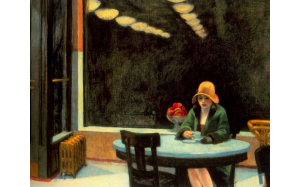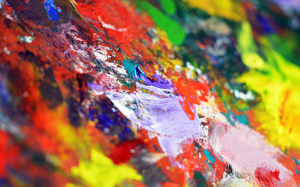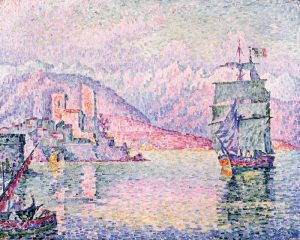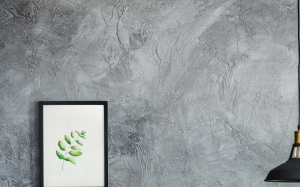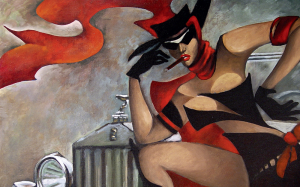Three palettes Eugene Tkachenko
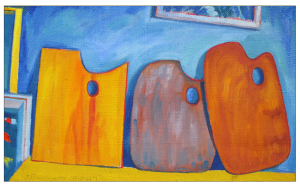 Once the artist Nikolai Ge, who taught Lev Tolstoy’s daughter to painting, very simply explained things that seemed so complex at first glance. The girl asked how to distinguish a true masterpiece from a picture not worth attention. And the master said that strong feelings should flare up between the viewer and the picture. Of course, one cannot discount the level of the viewer’s perception, preparation, his ability to feel and let the emotional state of another person pass through him.
Once the artist Nikolai Ge, who taught Lev Tolstoy’s daughter to painting, very simply explained things that seemed so complex at first glance. The girl asked how to distinguish a true masterpiece from a picture not worth attention. And the master said that strong feelings should flare up between the viewer and the picture. Of course, one cannot discount the level of the viewer’s perception, preparation, his ability to feel and let the emotional state of another person pass through him.
At some point, I realized that between me and the paintings of certain authors there is the very empathy that Ge was talking about. My story will be about one of them – the “sunny” artist Evgenia Tkachenko.
The first acquaintance with his work took place when I saw a self-portrait of Tkachenko, dated 1970.
A naked man in full growth appeared before me. His gaze was directed upwards, beyond the limits of the canvas, and the figure stretched to the limit was clamped practically from all sides. And it immediately became clear what kind of person he was. His worldview was much broader, it was difficult for him to breathe within the system.
From the picture, painted in bright colors, breathed anxiety, and it was clear that not everything is as smooth as it seems. Even white clouds cast anxiety, not to mention the scarlet ground.
Personally, I had an association with the May Day demonstration. And it is on this bright spring day that the artist challenges society. As if he wants to say: look, I am as I am, I am outside your laws! Here it is, my demonstration.
Unlike his fellow artists, he does not fulfill the social order, does not move art to the masses, does not sing the existing system. From time to time he writes in the style of social realism, violating his main principle – ideological. He gradually substitute reality for ideas, revealing the problems of society with a brush, like a scalpel.
Yevgeny Tkachenko was born in 1923 in a military family. In 1941, he went to the front. In 1944, he was wounded, after which he was demobilized.
Tkachenko enters the pedagogical school, after which he works as a schoolteacher for some time, at the same time he writes sketches from life and visits a drawing studio. In 1949, he became a student of the Odessa Art School of. Grekova.
In the country, the heyday of socialist realism. Artists, writers, the entire creative intelligentsia are faced with the task of praising the working man, changing the world, creating a new language of art, aesthetics, understandable to everyone and everyone.
Tkachenko, once in Odessa, does not heed these requirements. Here, in this southern city, he falls in love with impressionism. Here he learns to seize the moment, the state, which is so important for the impressionists and those who work in their tradition.
His paintings convey not only the mood, the fleeting, that is sung by the impressionistic school, the air condition is captured in them, and often it can only be felt; they are light and light.
“Music School in Odessa”, written in 1954, sparkles with the sun, a little warm, spring. It has a light spring air, flooded the city streets. At first glance, her state seems frozen, taken out of reality. But the attentive viewer will see the very beauty of the moment, the fleeting state, which will soon leave, because buds will appear on the tree, then leaves, and the sun will no longer caress the branches of the unbidden tree. It will break through the foliage, the air will be completely different, the light will be more intense, and another moment will be captured. Also beautiful, but different.
At the end of the art school Tkachenko leaves Odessa. But the love for this city, for the alma mater, he will carry through his life.
In many paintings Tkachenko refers to the sun – the source of all life on Earth. And if in the Odessa period we see only sunlight, then, after years, the sun becomes one of the main components of the composition.
His July Sun (1970) is an earthly whirlwind. The sun is the main “character” here, it sets all this whirling rhythms of houses, trees, pedestrians and the shadows cast by them. It creates shape and color.
Over the years, his style will undergo changes, but he will always remain faithful to the post-impressionistic tradition. He will continue to pay attention to the color solution, now his stroke is wider and the detailing is not the same as before, and a bright color spot prevails.

